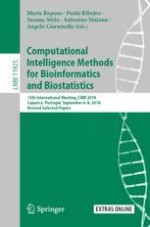This book constitutes the thoroughly refereed post-conference proceedings of the 15th International Meeting on Computational Intelligence Methods for Bioinformatics and Biostatistics., CIBB 2018, held in Caparica, Portugal, in September 2018. The 32 revised full papers were carefully reviewed and selected from 51 submissions. The papers present current trends at the edge of computer and life sciences, the application of computational intelligence to a system and synthetic biology and the consequent impact on innovative medicine were presented. Theoretical and experimental biologists also presented novel challenges and fostered multidisciplinary collaboration aiming to blend theory and practice, where the founding theories of the techniques used for modelling and analyzing biological systems are investigated and used for practical applications and the supporting technologies.
